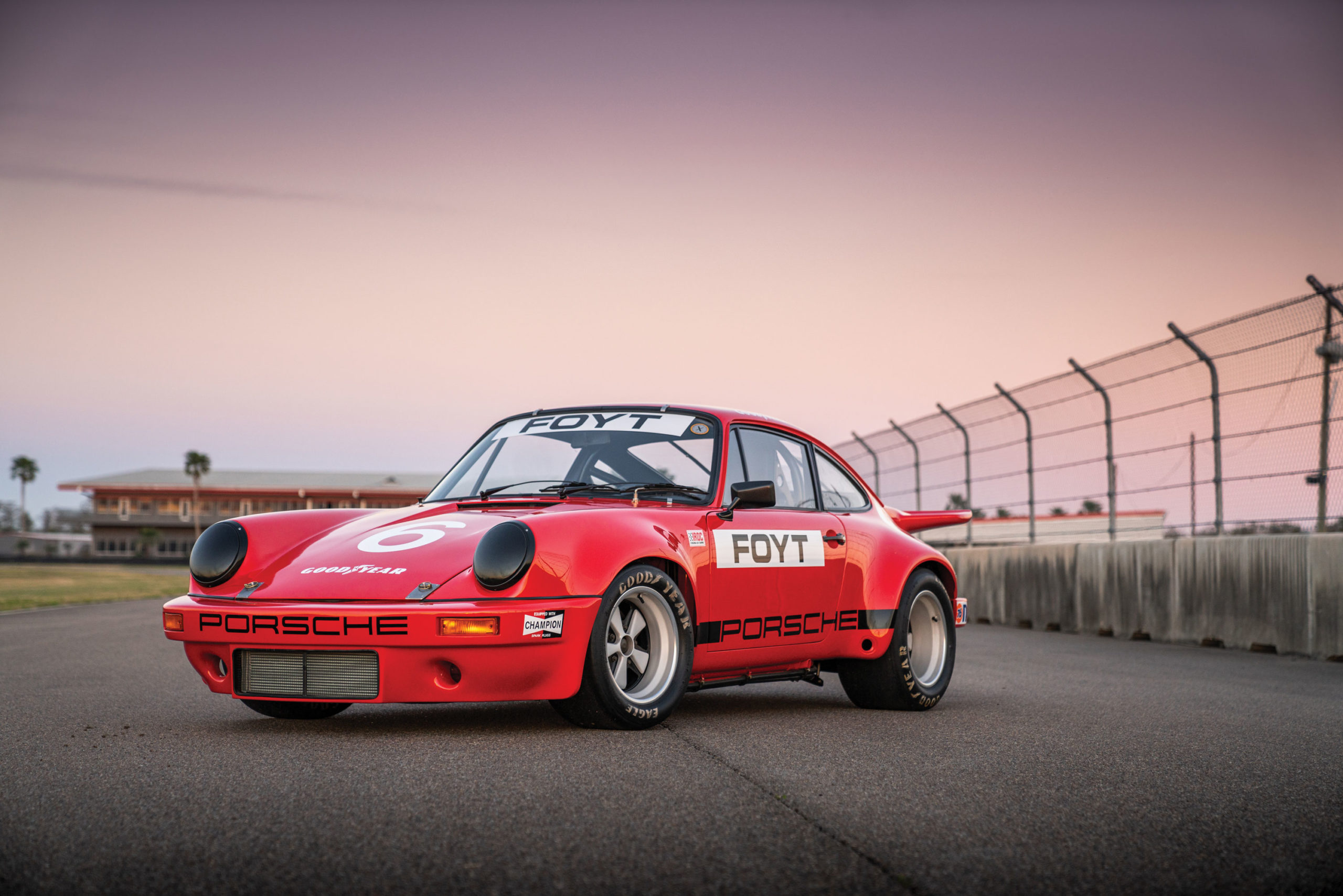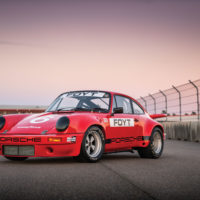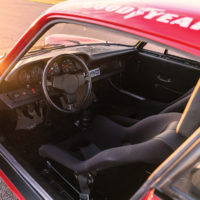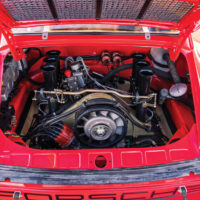SCM Analysis
Detailing
| Vehicle: | 1974 Porsche 911 Carrera 3.0 RSR IROC |
| Years Produced: | 1973–74 |
| Number Produced: | ROC, 15; 3.0 RSR, 60 |
| SCM Valuation: | $1,697,000 |
| Chassis Number Location: | Bulkhead just aft of gas tank |
| Engine Number Location: | Fan housing support, right side |
| Club Info: | Porsche Club of America |
| Website: | http://www.pca.org |
| Alternatives: | 1974 BMW 3.0 CSL 1973–74 Ferrari Daytona Comp 1973–74 DeTomaso Pantera Group 4 |
| Investment Grade: | A |
This car, Lot 83, sold for $1,627,500, including buyer’s premium, at Gooding & Company’s Amelia Island, FL, auction on March 4, 2022.
Porsche’s production-based racing cars of the mid-1970s through the early 1980s combine simple lineage with incredible success, complicated by a complex series of considerations for the contemporary collector and vintage racer. Depending on how these variables line up for a given car, its market value can vary from relatively low weapons-grade range to seriously expensive collector range. The scary part is that they all deliver pretty much the same driver experience and lap times. The differences are in history, authenticity and the like. Collectibility is key to value.
The factory 911 racer is born
The history of the competition Porsche 911 is well known, but worth going over for the sake of perspective. To start with, the 911 was never intended to be a racer. Porsche had known since the earliest days that for ultimate performance, the engine had to be ahead of the rear axle. But in the days when good access to the engine every few thousand miles was essential, that didn’t work for a street car. The 911 was designed and sold as a quick, comfortable GT car, and the racing was left to bespoke competition cars through the 917.
The end of 1971 presented a problem for Porsche. The loophole that had allowed the 917 to compete was closed in favor of what were fundamentally 2-seat Formula One racers, an area in which Porsche had neither the experience nor the budget to be competitive. But Porsche had been enormously successful — even dominant — in FIA racing for years and wanted to keep winning. The only viable route was to adapt the 911 to the task. In 1972, it had success with its 2.4-liter 911S, but it was going to take substantial modification to get to a level where it could compete with Ferrari Daytonas and DeTomaso Panteras for overall wins in the FIA Group 4 Grand Touring Championship. Porsche needed less weight, a bigger engine, more tire and a stiffer chassis.
FIA’s Group 4 requirements included a minimum production of 500 units, so Porsche introduced its “homologation special” 911 2.7-liter Carrera RS in 1972. It had all the goodies required for conversion into a serious racer: the 2.7 engine, revised suspension, huge fender flares, a ducktail spoiler and lightweight everything. It was a resounding success with over 1,300 street versions sold.
RS to RSR to IROC
Creating the Renn Sport Rennen (RSR) from the RS was not a simple process. The bare chassis were pulled from the RS production line and built from the ground up as pure racers at a separate factory named Werk 1. Every possible modification allowed within the FIA rules was made: The track was wider by two inches, 917-style brakes were installed behind nine-inch front and 11-inch rear wheels, the rear spoiler and front air dam got larger, the chassis was strengthened in three places, and they managed to lose a further 176 pounds. The engine was stretched to 2.8 liters with special fuel injection, bigger valves, higher compression and racing cams, producing a reliable 300 horsepower at 8,000 rpm. The RSR proved extraordinarily successful.
Anticipating the 1974 season, Porsche developed a larger 3.0-liter engine for a substantial upgrade. This is where Roger Penske stepped in with his IROC concept. In late 1973, looking for a state-of-the-art, very fast, extremely dependable “spec racer” to create a level playing field for his 12 champions, he chose the 1973 RSR and had 15 identical cars built with the 3.0-liter flat six. They were used in the fall and spring of 1973–74, then sold off to private owners when the series ended.
Porsche developed the RSR 3.0 for the 1974 FIA series with the larger engine, wider wheels, and better aerodynamics, and its international success continued. Always looking for ways to get faster, Porsche started experimenting with turbocharging the RSR in 1975. In 1976, Porsche introduced the 934 and subsequent Turbo variants with far more horsepower, after which the naturally aspirated RSRs quietly retired from serious racing.
Collectibility = Value
Trying to make sense of the market values of RSRs can be a challenge. At Gooding’s 2016 Amelia Island auction, a car virtually identical to our subject sold for $2.3m (SCM# 271308). In 2018 a 1974 Turbo RSR failed to sell at $5.4 million (SCM# 6867814). Today’s subject car sold for just over $1.6m, while two lots away another 3.0 RSR sold for $830,000 (within the estimate — it was what they expected). These were all honest, Porsche-built RSR variants at reputable auctions. How do we understand this? I suggest that we must go back to the old weapons vs. collector-values dichotomy; In this case one is dropping while the other continues strong.
The basic problem with all production-based Porsche racers is that they are relatively easy to replicate. Porsche originally took chassis off the production line and converted them into fire-breathing racers, and any competent Porsche racing shop can do the same thing. Not only that, but both the FIA and most U.S. promoters are perfectly happy to allow properly built examples to race regardless of originality. Porsche built more than 100 RSRs in 1973 and 1974, and lord knows how many replicas are out there. If you just want to go racing in one of these cars, you don’t have to spend a lot of money.
Another issue is that though the FIA breaks its grids at 1976 (which puts most turbocharged cars in a separate group), most U.S. races combine early “wings and slicks” cars. This means that naturally aspirated RSRs are mid-pack at best against turbo 934s and 935s. If it’s about winning, go get a turbocharged 911 for about the same investment. All of this conspires to make valuing RSR Porsches all about collectibility: History, livery and provenance rule.
Rare, distinctive, fairly bought
There is a clear hierarchy when it comes to values. The top cars have succesful European race histories, Le Mans finishes, GT Championship points, famous drivers and clean provenance. IROC RSRs are a step down, a second tier. They have limited U.S. history but famous drivers with distinctive livery. Plus, there were only 15 built, so supply is small.
Below this lie the cars with a wide assortment of histories, provenance and subsequent values. The $830k RSR that sold beside our subject was a real car but with little history, an incorrect paint scheme, etc., so it sold at the bottom of the range.
The bottom line is that the “go play with it” weapons value of a Porsche RSR is somewhere well under a million dollars, while the collector factors can make it three to four times that. Both components are real and important, but the weapons side has been dropping while the collector side has held relatively constant. It is a range within which a buyer can choose. This car was fairly bought and sold considering those factors. ♦
(Introductory description courtesy of Gooding & Co.)



